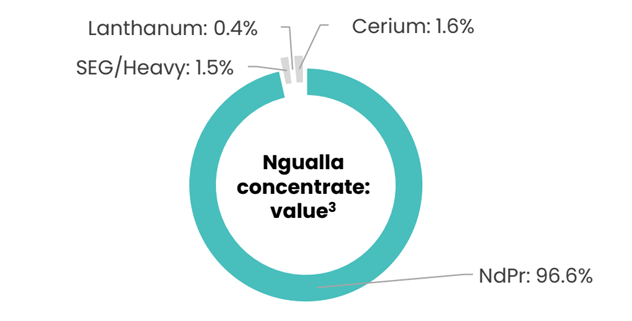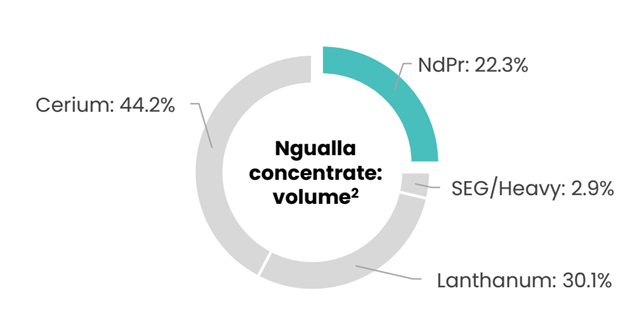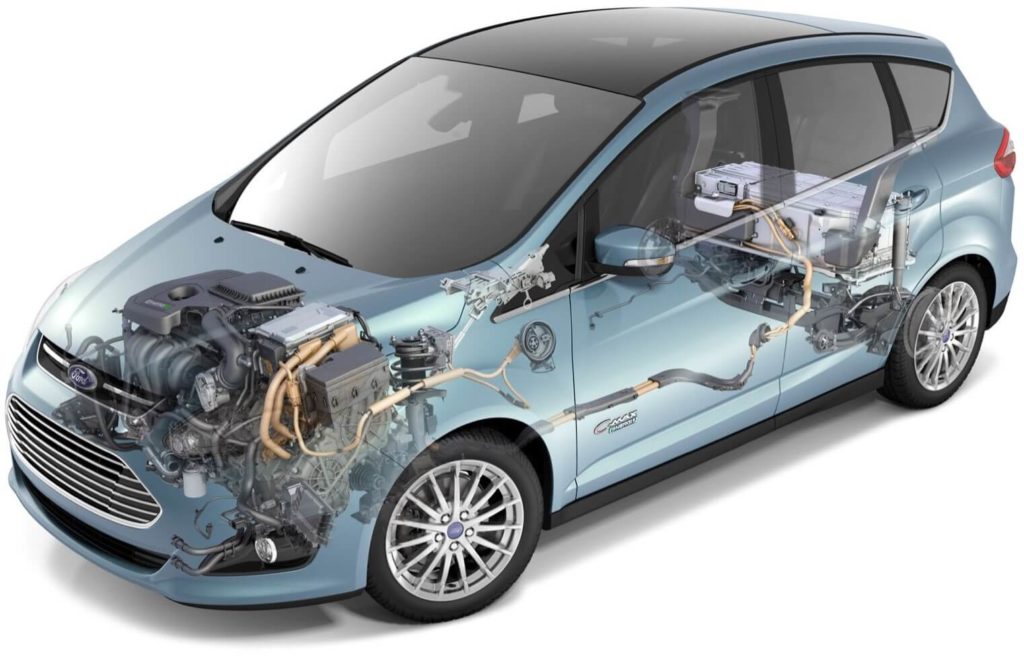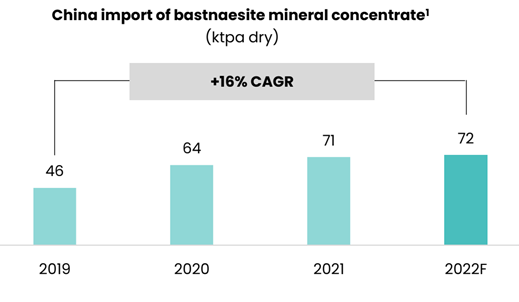Rare Earths

Rare earth fundamentals
Rare earths are a group of 17 elements that includes all 15 Lanthanide elements as well as elements Scandium and Yttrium
Rare earth elements are characterised by their unique magnetic properties which has seen rare earths used in a growing number of advanced technological applications including consumer electronics and high-power magnets. Peak Rare Earth’s Ngualla deposit is one of the world’s largest and highest-grade undeveloped rare earth deposits with a JORC Ore Reserve of 18.5Mt at 4.8% Rare Earth Oxide (TREO); with the high value rare earth elements neodymium and praseodymium accounting for 23% of Ngualla’s total TREO content.
Rare Earth Elements
'Light' Rare Earth Elements








'Heavy' Rare Earth Elements







Other Rare Earth Elements


Ngualla Project Ore Reserve (Grade) Breakdown and Concentrate Value


Peak Rare Earths – supporting the green transition
“ Approximately 96% of Peak’s revenues for the Project will be derived from the Neodymium-Praseodymium value, which accounts for ~85% of the overall global rare earths sector. NdPr Oxide is used in the production of permanent NdFeB magnets, which, in turn, are used in the production of electric motors in electric vehicles and for direct drive wind turbines, amongst other applications. The NdFeB magnets have high magnetic strength relative to their size and weight which makes them ideal for products that require a high energy-to-weight ratio, such as EVs and wind turbines. Hence The development of Ngualla will provide the world with a critical supply of rare earths and play an important role in assisting the global green transformation process.
Rare Earths in xEVs

Cerium
Cerium
Europium
Yttrium
Cerium
Yttrium
generator
Neodymium
Praseodymium
Dysprosium
Terbium Headlight Glass
25+ electric motors
throughout vehicles
Neodymium-praseodymium magnets
Cerium
Lanthanum
Cerium
Lanthanum
1kg
Each EV uses an additional 0.5 – 1kg of NdPr Oxide compared to a standard internal combustion vehicle.
200kg
Each MW generated from a direct drive wind turbine uses 200kg of pure NdPr Oxide.
Rare earth prices – decarbonisation continues to drive NdPr Price
Rare earth prices continue to accelerate on the back of increasingly tight market conditions, projections of rising market deficits for NdPr Oxide and increasing demand for non-Chinese sourced product.
Spot prices for NdPr Oxide have appreciated by approximately 160% over through 2021 and are currently trading around US$140/kg as at January 2022. Factors supporting higher prices and a rising market deficit include:
Accelerating demand
Rapidly growing demand for NdFeB magnets for use in EV, wind turbines and consumer electronics
The growing appetite for global diversity of supply
Growing need for diversity of supply particularly in light of rising geo-political and trade tensions. China currently accounts for 90% of global rare earth production
Growing supply shortages
China domestic feedstock of rare earths continues to deplete, while environmental and mining standards continue to become increasingly stringent including a growing crackdown of illegal mining
COVID-related supply chain disruptions
Ongoing supply disruptions to Myanmar rare earth exports
Supply side consolidation
Supply side consolidation has been seen in China with two large mega-mergers between multiple rare earth companies has taken place.
Shallow project pipeline
Peak’s Nugualla project is one of only a few projects globally which can be production-ready within the next five years.
China import of bastnaesite mineral concentrate

1. China import data

